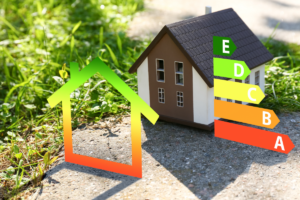1. Introduction to BIM and Sustainability
In today’s rapidly evolving construction industry, sustainability has become a paramount goal. Building Information Modeling (BIM) emerges as a pivotal technology, revolutionizing how we design, construct, and manage buildings with minimal environmental impact.
2. Benefits of Low Carbon Buildings
Building low carbon buildings is not just a trend but a necessity in combating climate change. These buildings significantly reduce greenhouse gas emissions, promote energy efficiency, and create healthier environments for occupants.
3. How BIM Contributes to Carbon Footprint Reduction
BIM plays a crucial role in reducing the carbon footprint of buildings by optimizing design processes, improving material efficiency, and facilitating better construction practices that minimize waste.
4. Implementing Sustainable Practices with BIM
Integrating BIM into sustainable building practices involves using advanced modeling and simulation tools to predict and optimize energy consumption, water usage, and overall environmental impact throughout the building’s lifecycle.
5. Case Studies: Examples of Low Carbon Buildings with BIM
Several notable projects worldwide demonstrate the effectiveness of BIM in achieving low carbon goals. For instance, the Bullitt Center in Seattle is renowned for its net-zero energy performance achieved through meticulous BIM-driven design and construction.
6. The Role of BIM in Building Energy Efficiency
BIM enables precise energy modeling, allowing architects and engineers to analyze building performance and implement strategies for improving energy efficiency through optimal design and operational practices.
7. Energy Modeling and Simulation with BIM
Through sophisticated energy modeling and simulation capabilities, BIM helps in evaluating different scenarios to identify the most energy-efficient solutions, such as passive design strategies, renewable energy integration, and HVAC system optimization.
8. BIM-Driven Design Strategies for Sustainability
Design strategies enhanced by BIM include bioclimatic design principles, passive heating and cooling techniques, and the use of sustainable materials, all contributing to reduced environmental impact and enhanced building performance.
9. Challenges and Solutions in Adopting BIM for Low Carbon Buildings
Despite its benefits, adopting BIM for sustainable building practices faces challenges such as initial costs, training needs, and interoperability issues. Solutions involve collaborative efforts, standardized workflows, and ongoing education within the industry.
10. Future Trends: Advancing BIM in Sustainable Building Construction
Looking ahead, BIM is poised to advance further in promoting sustainability through innovations in artificial intelligence, IoT integration for smart buildings, and enhanced lifecycle management capabilities, driving the industry towards greener and more efficient building practices.
Building the green future with BIM for low carbon buildings represents not just a technological advancement but a commitment to environmental stewardship and sustainable development. As BIM continues to evolve, its integration with sustainable practices will play a crucial role in shaping a more resilient and eco-friendly built environment for generations to come.





